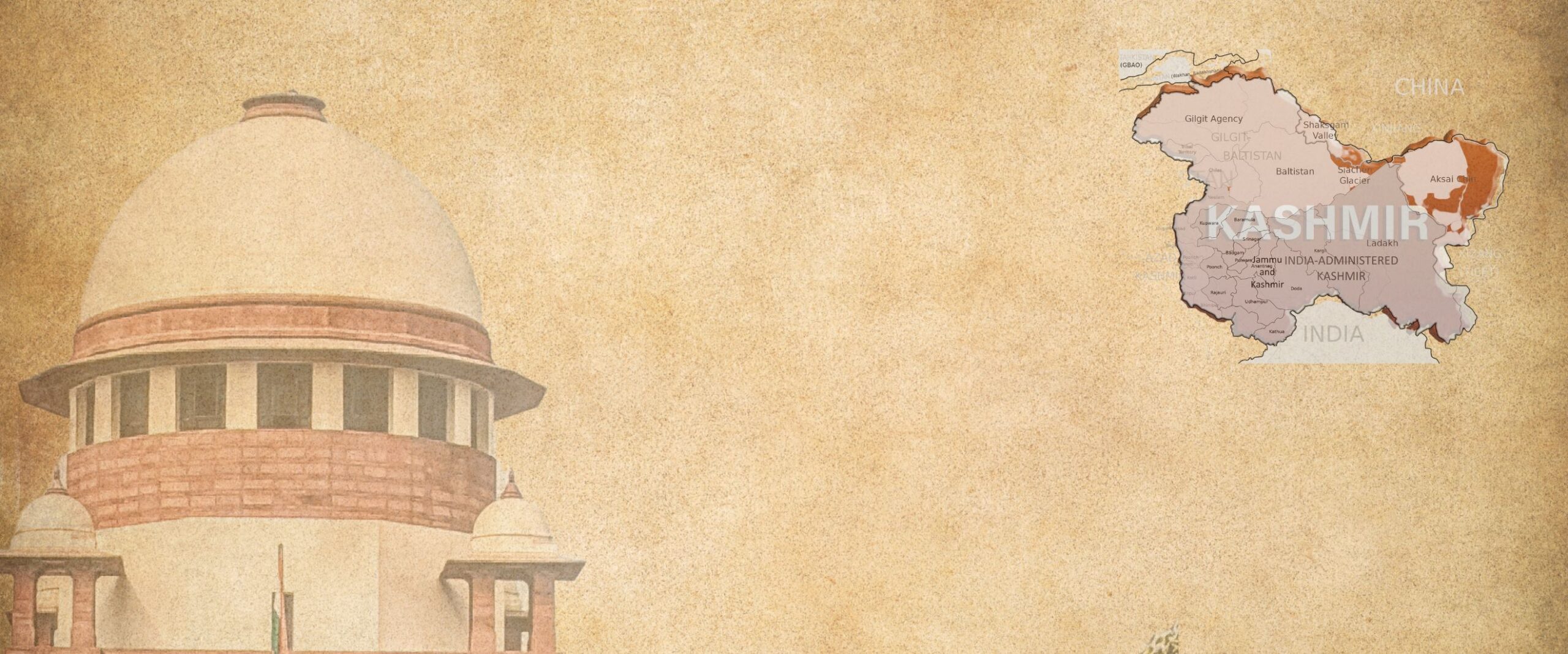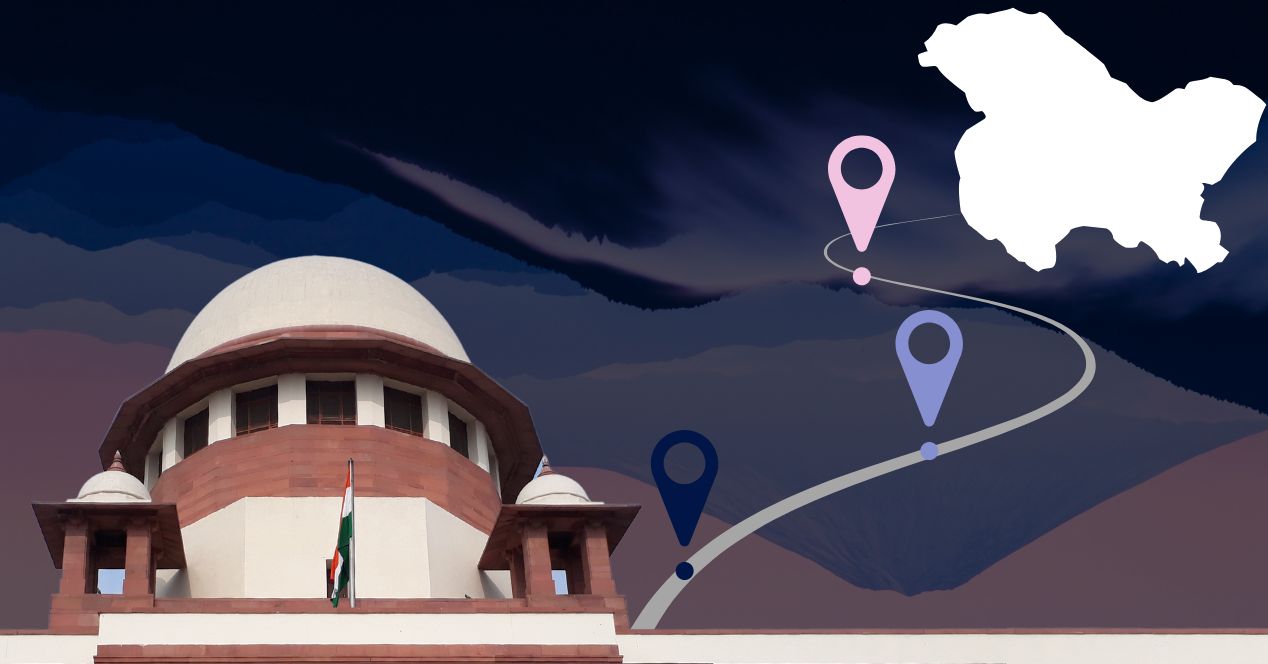Analysis
Understanding the Abrogation of Article 370: Origin and Impact
The Supreme Court will decide the extent of the Union’s powers to make laws for Jammu and Kashmir and abrogate Article 370.

After almost four years of repose, the Supreme Court is set to hear the challenge to the abrogation of Article 370 next week. The Court’s decision will have practical ramifications on the extent of Jammu and Kashmir’s autonomy and the Union’s powers to alter it.
Art. 370 granted ‘temporary’ special status to Jammu and Kashmir. From August 2, 2023, five senior most judges of the top Court— Chief Justice D.Y. Chandrachud, S.K. Kaul, Sanjiv Khanna, B.R. Gavai and Surya Kant will hear a batch of petitions challenging the Union’s 2019 Orders which effectively abrogated this special status given to the State.
The Origins of Jammu and Kashmir’s Unique Status
In 1947, following the India-Pakistan partition, Jammu and Kashmir, a princely state—with a Muslim majority and a Hindu ruler—that shared a long border with the two countries, witnessed high tensions with both India and Pakistan coveting it. The erstwhile ruler of the State of Jammu and Kashmir, Maharaja Hari Singh was in a dilemma. He neither wanted to join the newly democratic India nor was he inclined to side with the Muslim-majoritarian Pakistan. He wanted Kashmir to remain an independent State.
On October 24, 1947, Singh appealed to India for military protection against threats and attacks from Pakistan. In return, he would cede Jammu and Kashmir to India. The result was the signing of the ‘Instrument of Accession’ (IoA) by which Singh, on October 27th, 1947, acceded Jammu and Kashmir to India. However, terms and conditions applied. India would not be given complete control over the State.
As per this instrument, India’s Parliament could enact laws only on three subject matters—defence, external affairs and communications. Everything else was left to the State of Jammu and Kashmir. Further, the State was not bound by the Constitution of India (which was being drafted at that time). The IoA also stated that it could not be amended by the Indian government unless a supplement to the IoA allowed it.
Contents of Article. 370
The constituent assembly introduced Article 370 (Draft Art. 306A) to give effect to the IoA. This Article is titled ‘Temporary provisions concerning the State of Jammu and Kashmir’. Its purpose was to enable Jammu and Kashmir to transition from an independent princely state to a democratic State of India.
In essence, this Article did three things:
- It limited the power of the Indian Parliament to make laws for Jammu and Kashmir to the three subjects mentioned in the IoA—defence, external affairs and communications.
- It stated that except for Article 1, the Constitution of India did not apply to Jammu and Kashmir. Article 1 states that India is a Union of States.
- It stated that this Article could only be amended by the President with the consent of the Constituent Assembly of Jammu and Kashmir. Even though Jammu and Kashmir’s Constituent Assembly would cease to exist once the State’s Constitution came into being, the power to amend Article 370 was given only to the Constituent Assembly and not to its legislative assembly. Therefore, arguably, this Constituent Assembly was meant to decide the fate of Article 370 once and for all.
The Establishment and Dissolution of Jammu and Kashmir’s Constituent Assembly
On October 31, 1951, Jammu and Kashmir’s Constituent Assembly was established. In 1956, this Assembly created the Constitution for Jammu and Kashmir which declared that ‘Jammu and Kashmir is and shall be an integral part of the Union of India’.
This Assembly abolished the Maharaja system and established an Officer named ‘Sadar-i-Riyasat’ as Head of the State. It said nothing about the abrogation or modification of Article 370.
After drafting the State’s Constitution, the Constituent Assembly was permanently dissolved on January 26, 1957. In theory, this meant that the President of India could no longer modify or repeal Article 370 unless a new Constituent Assembly was created. How then did the Union government abrogate this Article in 2019?
The Abrogation Process
The election manifesto of the ruling Bharatiya Janata Party (BJP) for the 2009, 2014 and 2019 General Elections affirmed its intention to abrogate Article 370. After winning the election, the BJP government dissolved Article 370 with two Presidential Orders—CO 272 and CO 273 on August 5 and August 6, 2019, respectively.
The first Order issued on August 5, 2019, amended Article 367 which dealt with the interpretation of the Constitution. The Order stated that the phrase ‘Constituent Assembly’ under Article 370 shall be read as ‘Legislative Assembly’ of the State.
At the time, Jammu and Kashmir was under President’s Rule, by which its Legislative Assembly and Governor were replaced with the Union Parliament and the President. Therefore, the ‘Legislative Assembly’ of the State was the Union Parliament. In other words, the President could modify or abrogate Article 370 at the request of the BJP-led Parliament.
Immediately after this Order, a Statutory Resolution was passed by both Houses of Parliament recommending that Article 370 be dissolved.
The next day, on August 6, 2023, the President issued the second Order which held that Article 370 ceased to operate and that Jammu and Kashmir was a part of the Union of India.
Reorganisation of the State
Following the abrogation of Article 370, on August 9, 2019, Parliament passed the Jammu and Kashmir Reorganisation Act, 2019. This Act bifurcated the State into two Union Territories—Jammu and Kashmir and Ladakh. The former had a legislative Assembly and the latter did not.
Practical Implications: No More Special Status
The abrogation removes the special status granted to Jammu and Kashmir by the Constitution. This means that the Indian Parliament’s power to make laws for the newly formed Union Territories is no longer restricted to three subjects. The Constitution and other territorial laws of India apply to these two territories as they would to any other State and Union Territory in the Country. The Constitution of Jammu and Kashmir is redundant and the region no longer has a separate flag.
Further, the exclusive benefits granted to ‘permanent citizens’ of Jammu and Kashmir to own and acquire property within the region stands dissolved.
Reactions and Responses
The constitutional status of an area plagued with decades of unrest changed overnight.
Former Jammu and Kashmir Chief Minister Mehbooba Mufti said that the decision to abrogate Article 370 was a ‘sinister one’ taken to alter the demographics of a Muslim-majoritarian State. She said the abrogation removed the autonomy granted to the State in 1947.
Senior Congress Party member P. Chidambaram criticised the move stating that a State had never been reduced to a Union Territory before. Earlier in 2023, Congress leader Jairam Ramesh said his party is demanding the restoration of Jammu and Kashmir’s statehood.
Internationally, Pakistan and China opposed the abrogation stating India had breached their territorial sovereignty. The BJP government maintained that this issue concerned only India and no international borders were breached.
The Challenge at the Supreme Court
Immediately after the abrogation, several individuals and organisations around the Country moved the Supreme Court challenging its constitutionality. Their arguments are two-fold.
First, the abrogation breached the constitutional special status granted to Jammu and Kashmir. By modifying the meaning of ‘constituent assembly’ to abrogate the Article, the Union indirectly did what it directly could not.
Second, they argue that the reorganisation of the State is a violation of Article 3 of the Constitution. Article 3 of the Constitution does not give the Parliament powers to downgrade federal democratic States into a less representative form such as a Union Territory.
Initially a 3-Judge Bench led by former CJI Rajan Gogoi referred the case to a 5-Judge Constitution Bench in . From October 1, 2019, Justice N.V. Ramana’s 5-Judge Bench heard arguments that the case must be referred to a larger bench. Ultimately, the Bench refused the plea for reference. This was in March 2020. The case saw no further movement till 2023.
On July 11, 2023, the Supreme Court scheduled to hear the batch of petitions challenging the abrogation on August 2nd, 2023.
Why Does this Matter?
The implications of the top Court’s decision in the case will be complex. The Court will decide if the Union’s abrogation of Article 370 and the way it was effectuated (by altering Article 367 of the Constitution through a Presidential Order) is valid.
By this, the Court will clarify the extent of powers of the President and Parliament to make laws for Jammu and Kashmir and also state what the proper way to do so is. The Court’s decision will influence the nature of Union-State relations, the contours of Article 3, and the limits of federalism.
If the abrogation is found to be unconstitutional, will the Supreme Court reverse the reorganisation of the State? Can it reinstate Jammu and Kashmir’s constitutionally granted special status? In any case, the Court will have to consider the ground impact of the four years that it has taken for the top Court to hear the case. The Court’s decision will have far-reaching implications on all political, legal and regional developments that have occurred in the State these few years. It will also have a ripple effect on the geo-political relations in the subcontinent.


